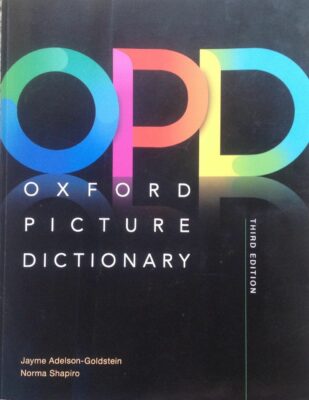Learn how to introduce yourself and others in English with this beginner-friendly ESL guide! Master key phrases, greetings, and conversation tips to build confidence in speaking English. Perfect for adult learners looking to improve their communication skills!

How Can Beginner ESL Learners Introduce Themselves and Others in English?
Beginner ESL learners can introduce themselves by using simple phrases like, “My name is…” and “I am from….” To introduce others, they can say, “This is my friend…” or “I’d like you to meet….” Practicing these phrases through conversation helps build confidence in real-life interactions.
Table of Contents
- Why Is Introducing Yourself Important?
- Basic Phrases for Introducing Yourself
- How to Introduce Others in English
- Common Greetings and Responses
- Practice Exercises for Self-Introductions
- Role-Playing Scenarios for Conversations
- Tips for Building Confidence in Speaking
Let’s start with one of the most fundamental parts of learning English: saying your name. It might seem super simple, but nailing ‘My name is…’ can really set the tone. Whether you’re in a classroom, job interview, or just meeting someone new for the first time, having a solid intro helps.
When you say ‘My name is…,’ make sure to add a smile. Body language counts a lot and helps you come across as friendly and open. Plus, it sets a welcoming vibe, which is never a bad thing.
Alright, let’s talk pronunciation. English can be tricky with its sounds, so practicing how you say these words matters. Try to stretch out each sound and speak slowly if you need to. There’s no rush. Recording yourself and playing it back can help you catch tricky spots.
Here’s a tip: listen to native speakers. YouTube and language apps are full of intro examples. Mimic what you hear. This isn’t just about the words—it’s about getting that natural rhythm and tone of speech.
There’s more to ‘My name is…’ than just saying it, though. In English culture, it’s common to shake hands while you speak it. Or these days, a nod or a wave will do fine. Observing these little bits of body language can make you feel a bit more at ease.
End goal is confidence. Practice until it feels second nature. The words ‘My name is…’ are your ticket to starting any conversation the right way.
How Do You Introduce Yourself in ESL?
Introducing yourself in an ESL setting should be simple, clear, and engaging.
A basic introduction includes stating your name, where you’re from, and a little personal detail. For example, “Hello! My name is Maria. I am from Mexico, and I love reading books and traveling.”
Encouraging students to practice their own introductions using a simple template builds confidence and fluency. It’s important to model a natural, friendly tone while using gestures and visual aids to help comprehension. Practicing introductions through role-play, repetition, and peer interactions reinforces learning in a fun, low-pressure environment.
How Do You Introduce Yourself and Others in English?
Introducing yourself and others in English follows a basic structure that includes greetings, names, and sometimes additional context.
A typical self-introduction might be: “Hi, I’m David. I’m from Canada, and I work as a software engineer.”
To introduce someone else, you can use phrases like “This is my friend, Anna,” or “I’d like you to meet my colleague, Mark.”
It’s polite to include a small detail about the person being introduced, such as “Mark just moved here from Australia,” to encourage further conversation.
Role-playing common introduction scenarios helps ESL learners gain confidence in these social interactions.
Introducing Others: Using ‘This Is…’ in Conversations
Introducing someone might seem like small potatoes, but it actually plays a big role in making everyone feel included. Using ‘This is…’ helps set the scene. It’s like you’re opening the door for new connections.

Pretty straightforward, the phrase ‘This is…’ signals you’re about to share the name of someone new in the conversation. Handy, right? You could say, ‘This is Maria,’ while pointing to Maria standing beside you.
When you’re introducing people, names are just the start. Adding a bit extra can spark new conversations. For example, try ‘This is Maria, my friend from college.’ Now you’ve set up a reason for the other person to ask more questions!
Getting comfortable with ‘This is…’ takes practice. Pair up with a friend or fellow learner and role-play different scenarios. It doesn’t have to be complicated. Just go through introductions and pretend you’re meeting new folks at a party or a gathering.
Remember, everyone’s a little nervous when meeting new people. It helps to keep things relaxed and light-hearted. If you flub an introduction, laugh it off and keep on going. You’re learning, and that’s what counts.
Personal Questions in Conversations: Engaging with Simple Queries
Personal questions—sounds a bit intimidating, right? But in English, they’re the building blocks of small talk. Knowing how to ask and answer them smoothly can keep a chat going and help you connect with people.
Everyday questions like ‘Where are you from?’ or ‘What do you do?’ pop up all the time. They’re not just polite filler; they’re invites to share a bit about yourself and learn about others. Getting comfy with these questions is essential for ESL learners.
When someone throws a ‘Where are you from?’ your way, keep your response clear and simple. ‘I’m from Spain, just outside of Madrid,’ does the trick. Sharing a little extra detail can give the other person something to latch onto and keep the conversation rolling.
The best way to get better at these exchanges? Practice and more practice. Pair up with a buddy and take turns with questions and answers. You’ll start to see patterns, which makes it easier to navigate chats in real scenarios.
Little tip: watch English movies or TV shows. They’re awesome for seeing how native speakers handle these questions. Pay attention to the responses and note the phrases that feel natural to you. Then, try them out in your practice sessions.
Crafting Your Self-Introduction: Writing and Speaking
Creating a self-introduction is like drawing a personal map. It’s your chance to set the stage about who you are and what you’re about. For ESL learners, getting this right boosts confidence and communication skills.
Start with the basics: name, where you’re from, and maybe a bit about your job or studies. “Hi, I’m Alex, I come from Italy, and I’m an art student.” Simple yet informative, and just enough to pique curiosity.
When writing it down, aim for clarity and brevity. No need to pen a novel—just the key highlights that paint your picture. Once you have a draft, it’s all about practice. Reading it out loud a few times will help lock it in.
Getting comfortable with speaking is the next step. The first few tries might feel awkward, but that’s okay! Record yourself to hear how you sound; it helps to iron out any awkward phrases and boost your delivery.
Feedback from friends or teachers is gold. They can point out areas to improve and celebrate what’s working well. With that input, you can refine your introduction and build even more confidence.
Remember, your introduction is a living document. As you grow and change, so should your intro. Reflect the newest and truest version of yourself when speaking.
How to Teach an ESL Class to Adults?
Teaching ESL to adults requires a structured yet flexible approach that balances instruction with real-life application.
Begin each class with a warm-up activity to engage students and set a comfortable tone.
Here’s an example of how I begin every class:
I say in a strong voice, “ENGLISH!”
I then ask how everyone is doing. Most reply. Some ask me how I’m doing. I always reply and thank them for asking.
I then ask, “What’s the date today?” I’ve trained them to answer “Today is ______.” They begin with the day of the week, followed by the month, the ordinal number date (1st, 2nd, 3rd etc.) as that is how we say it in English, then the year.
I then ask, “What’s the weather today?” They answer and sometimes we discuss whether it’s cool or cold, warm or hot etc.
From there, we begin our lesson which usually begins with a page in the picture dictionary that is relevant to the rest of the lesson

Use visual aids, real-world examples, and interactive exercises to reinforce concepts. A lesson should include clear objectives, vocabulary practice, speaking and listening exercises, and written reinforcement.
Encourage participation through pair work, group discussions, and role-play. Providing feedback in a positive, constructive manner helps build student confidence. Most importantly, make lessons relevant by incorporating everyday scenarios that students are likely to encounter in real life.
How to Introduce Yourself as an ESL Teacher Without Experience?
If you’re new to teaching ESL, you can still introduce yourself confidently by highlighting your enthusiasm, background, and teaching philosophy.
I did that from day one. It created an immediate rapport with the class.
Instead of focusing on formal experience, emphasize transferable skills such as communication, patience, and adaptability.
A strong introduction might be: “Hello, my name is Alex, and I’m excited to be your English teacher. I have a passion for languages and helping others communicate effectively. In this class, we’ll focus on practical speaking skills, and I’ll ensure a supportive learning environment for everyone.”
Building rapport through friendly engagement, a smile, and a structured self-introduction activity can help ease nervousness and establish credibility.
Final Thoughts
Mastering how to introduce yourself and others is a crucial step in building confidence in English conversations. With practice, these simple phrases will become second nature, making social interactions smoother and more enjoyable. The more you practice, the easier it gets!
Ready to take your English skills further? Download our free worksheets and practice materials to reinforce what you’ve learned. Join our Study Buddy Program to practice with other learners and start speaking with confidence today! Click here to get started!
What do you think? What’s your favorite way to introduce yourself to others and to introduce others to other people?
I hope I’ve given you enough information and motivation to open your mouth and introduce yourself and others with confidence.
Leave questions and comments in the space below. I always reply.


This guide does a great job of breaking down self-introductions for beginner ESL learners in a practical and approachable way. I love how it emphasizes using body language and simple phrases to build confidence, especially for real-life situations. The role-playing tips are a smart touch, making the learning process more interactive and less intimidating. The section on introducing others is also helpful, as it encourages adding personal details to keep conversations going.
Do you have any tips for helping shy learners feel more comfortable introducing themselves in group settings?
Hi Kavitha, thanks for your comments. You may not like my answer to your question. The best tip I can give someone who is shy is to practice, practice, practice. People need to learn to accept that the learning process can be awkward, uncomfortable, and even painful at times. Practice is the only thing I know of that will help overcome that.
KBob